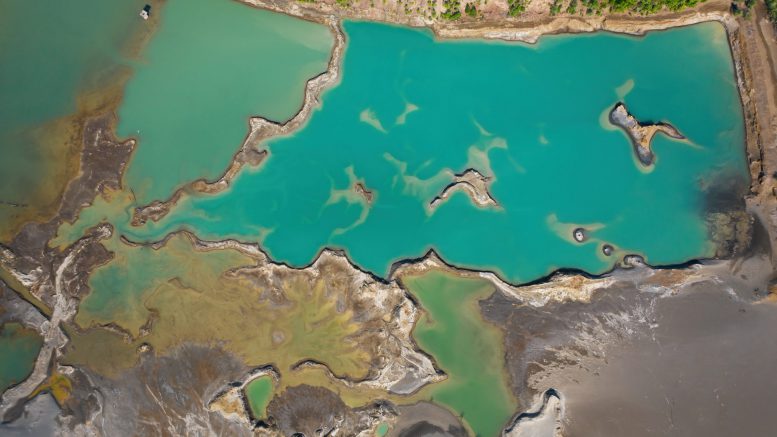It is estimated that 23 million people living on the world’s floodplains are being exposed to potentially dangerous concentrations of toxic waste derived from mining, much of it the result of legacy activity.
This was the key finding of a new study by researchers from the University of Lincoln, which used hydrologic models to determine the extent of river system contamination from mines and failed tailings dams.
Published on Sept. 21 in the journal Science, the study employed a combination of process-based modelling and empirical testing to essentially predict the global impact of mining hazards, such as lead, zinc, copper and arsenic. These pollutants are usually transported downstream from mining operations, and often deposited along river channels and floodplains for extended periods.
To model their potential impacts, the research team developed a georeferenced database of roughly 185,000 mining sites, plus nearly 12,000 mining waste storage facilities and known cases of failed and leaking storage sites.
The research team describes their database, which is derived from information published by governments, mining companies and organizations like the U.S. Geological Survey, as “the most comprehensive compilation of mine locations to date.”
That data then allowed the scientists to produce a computer model to map out the extent of river channels and flood-plains around the world that are polluted by mining waste, from both historical and current operations.
Far reach of contaminants
Released against the backdrop of growing demand for metals and minerals to feed the green energy transition, the results highlight the widespread reach of contamination caused by mining.
Worldwide, mining affects roughly 479,200 km of river channels and 164,000 sq. km of floodplains, the study found. It is estimated that 23.5 million people reside on these affected floodplains, supporting 5.7 million livestock and encompassing over 65,000 sq. km of irrigated land.
However, these numbers are only a conservative estimate, given the lack of available data for several countries, the research team warned.
According to the study, there are multiple pathways for humans to become exposed to these contaminant metals, including from direct exposure through skin contact, accidental ingestion, inhalation of contaminated dust, and through the consumption of contaminated water and food grown on contaminated soils.
For countries and communities that are dependent on these rivers and floodplains, which are already burdened with water-related diseases, mining activity would therefore pose an additional health hazard.
Even in industrialized nations like the U.K. and the U.S., mining contamination constitutes a major and growing constraint to water and food security, compromises vital ecosystem services, and contributes to antimicrobial resistance in the environment, the study added.
Tool for prevention
Professor Mark Macklin, who serves as director of the Lincoln Centre for Water and Planetary Health and the lead scientist behind the groundbreaking research, believes their maps and modelling tools will help prevent future reckless mining.
“Our new method for predicting the dispersal of mine waste in river systems worldwide provides governments, environmental regulators, the mining industry and local communities with a tool that, for the first time, will enable them to assess the offsite and downstream impacts of mining on ecosystem and human health,” Macklin said.
“We expect that this will make it easier to mitigate the environmental effects of historical and present mining and, most importantly, help to minimize the impacts of future mining development on communities, while also protecting food and water security.”
“Rapid growth in global metal mining is crucial if the world is to make the transition to green energy,” added Professor Chris Thomas, who led the analysis and modelling work for this study.
“Much of the estimated global contamination we have mapped is a legacy from the industrial era – rightly, modern mining is being encouraged to prioritize environmental sustainability. Our methods, which also work at local scales, add an important new approach in this process.”
Professor Deanna Kemp from the University of Queensland’s Sustainable Minerals Institute, who was also on the research team, called the results “sobering.”
“At a basic level, these findings remind us that mining can cause extensive downstream damage over long periods of time,” she said. “Many people benefit from mining and metals, but we must do more to understand and prevent the negative effects on people who live and work in affected areas.”
“We’ve known about this for a long time,” Macklin told BBC News on Thursday. “What’s alarming for me is the legacy – [pollution from abandoned mines] is still affecting millions of people.”
“With climate change and more frequent floods,” he added, “this legacy [pollution] is going to extend and expand.”


Be the first to comment on "Study points to need to clean up legacy mining pollution that poses health risks to millions"